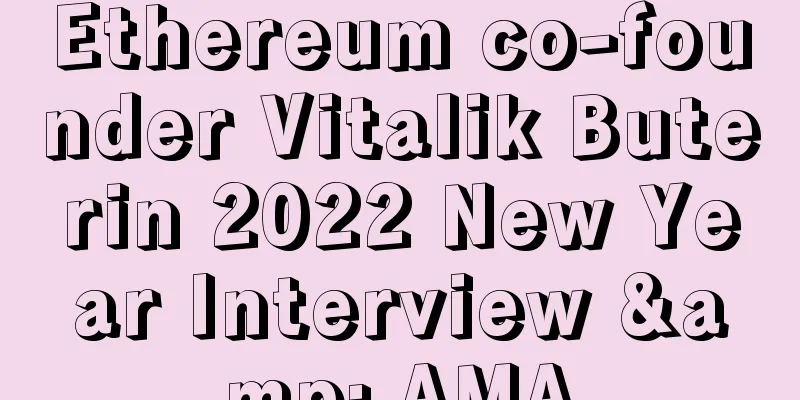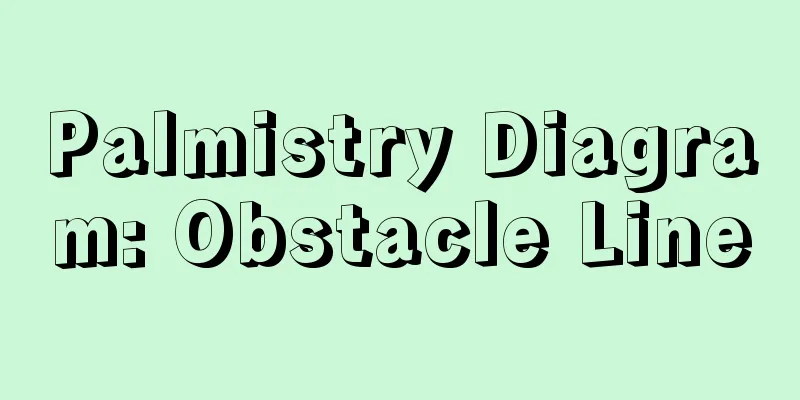Ethereum co-founder Vitalik Buterin 2022 New Year Interview & AMA

|
On February 4, ECN conducted an interview and AMA with Ethereum co-founder Vitalik Buterin. Vitalik discussed Ethereum’s development over the past year and his expectations for the future. The following is a video recording and a Q&A summary of the interview: 1. What are the significance of Ethereum 2021 progress, mergers and sharding implementation to the roadmap? (01:58) Vitalik: The three most important hard forks we did in 2021, the first one is Berlin, and the second one is London. The most important part of the London hard fork is EIP-1559, which is the reform of the transaction fee mechanism. 1559 has two very important parts. The first part is that the transaction fee thing has become more useful. If you send a transaction before the London upgrade, you may have to wait 30 seconds, 60 seconds, and sometimes even longer to package your transaction. But now you may have to wait for 5 seconds, 10 seconds, or 15 seconds. So now, sending transactions has become very fast. Regarding this, there is an article written by students from Peking University and Duke University. I forwarded this article on January 17. The second part is that 1559 began to consume a lot of ETH, and now it may have consumed more than 1.7 million, so now the issuance of ETH has become very small. This is the important content of London. Altair is the first hard fork of our PoS chain Beacon chain. Berlin and London are upgrades of the PoW chain. So now we have done a fork, we know how to do it, and it can be said that this is a test. So we have done a fork, and the next time we merge, it will be faster, safer, and simpler. The most important thing we have to do in 2022 is the merger. After the merger, the PoW chain will no longer exist, and we will only have the PoS chain. The accounts, contracts, and transactions we have now will run on the PoS chain. So this is a very important progress. The most important thing for us after the merger is scalability. Ethereum can only handle a few transactions now, and the transaction fee is still very high, but if we can solve the scalability problem, the transaction fee can become very low. Those rollup projects have done a lot. Now there are Optimism, Arbitrum, StarkWare, zkSync, Loopring on the mainnet, and there are many good projects. But rollup + sharding can make the transaction fee very low. So the merger and scalability are our most important tasks. After doing these two well, it can be said that 80% of the progress has been completed. It is still 50% now. 2. 'The Urges' roadmap explained (08:45) Vitalik: I released a roadmap in December last year: The first one is The Merge. The second one is The Surge, which is sharding and some scalability stuff. The third one is The Verge, which is about Verkle tree, a technology that makes it easier to verify the Ethereum chain and run a node. The fourth one is The Purge, which is to delete some historical things and some things in the protocol that we used before but don’t need now. Make the Ethereum protocol simpler. The fifth one is The Splurge, including all other important upgrades, including account abstraction, PBS (PBS is a topic we are particularly concerned about now), EVM upgrades, etc. But if we do the merge and sharding well, we will solve the biggest and most important problem. 3. Specific progress of the merger (11:00) Vitalik: Yesterday, Péter Szilágyi, a core developer of the Geth team, tweeted that the next pull request will be ready for the merge. This means that after the next version of their client is released, there is a lot of testing to be done, but there is not much left to do. So now we are probably at this stage. We already have a network, and we already have kintsugi. It has been running for six weeks, and the only and biggest thing that has not been tested is optimistic sync. That is, when a new node enters the network for the first time, how can it synchronize and download network information. This process still requires some development, and some of their client teams have done a lot of development, but more testing is needed. So now it is very likely that the merge work can be completed in June. Now there is a difficulty bomb. If we don't solve some problems before then, the time to produce blocks will become longer and longer. Of course, it can be delayed if it is really necessary, but in fact, we are still under some time pressure now. 4. L2 developments worth looking forward to in 2022 (13:50) Vitalik: Recently, there are a lot of users of Optimism and Arbitrum. Refer to the website cryptofees.info. Their transaction fees are relatively stable. However, they are not decentralized rollups yet, and they still have some private keys under their control. Because they are still worried that some fraud proof technologies may have bugs, they will do some auditing and verification. So the next step is to completely decentralize the verification process and the process of sorting transactions, which will take a little more time. 5. What other conditions are needed to make the user-centric Layer 2? (17:00) Vitalik: There are many projects that have not moved to L2 because the availability of L2 is not good enough. The transaction fee of L2 is slightly lower than that of L1, but not low enough. L2 projects still have some technical problems, and many ecological tools are not fully supported. Now the status of Layer2 is still growing slowly, and I think this problem can be solved in a year. 6. Security issues of cross-rollup (20:00) Vitalik: The security issues of cross-rollup bridges are simpler than those of cross-chain bridges. Because the merkle root of cross-rollup bridges is on L1. So the technical issues are smaller, and there is no need to worry about the consensus algorithm of the two chains. So it is much simpler to make a secure coss-rollup bridge than a secure cross-chain bridge. But there is still a lot of technical work to be done. There are many teams doing this now, but it can be done better. 7. Off chain avaialability (22:00) Vitalik: Many projects now choose off-chain data availability because on-chain data availability is still relatively expensive. But after sharding and some short-term solutions such as EIP-4488, on-chain data availability will become cheaper. But because off-chain data availability can make transaction fees extremely low, some projects will still choose zk-validium. However, cross-validium security issues are not big, and the security issues of two validiums are not much different from those of one validium. 8. Layer 2 Token Model (24:30) Vitalik: Maybe some L2 will have their own coins, maybe some won’t. Three or four years ago, the Ethereum community didn’t like some projects making their own coins. Maybe it’s because there were many unreliable projects that issued their own coins in 2016 and 2017, and people didn’t like it. People’s views on tokens have changed, and their attitudes have improved. They think it is a tool for self-governance. I have published some articles criticizing token voting before. Now there will be many projects doing some experiments, not just token voting, and there will be a lot of innovation, but we don’t know what it is specifically. 9. DAO practice and the interaction between blockchain and the real world (27:30) Vitalik: I like citydao very much. It can be combined with the real world in terms of identity and reply. Many people now think that blockchain is related to finance and gambling. The energy consumption problem of pow is one of the reasons why people criticize blockchain, which can be solved by pos. The biggest obstacle to non-financial applications is the issue of transaction fees. It certainly cannot solve all the government's opinions on blockchain, because the principles of the current world and the blockchain world are still very different, but doing the current things well can build your own ecosystem. 10. The positive impact that cryptocurrency and blockchain can have on various world crises (33:27) Vitalik: Different places have different problems, such as Argentina's serious financial problems, currency inflation, and the way of doing business, and the ability to build centralized infrastructure is relatively low. Quadratic fundraising, new governance methods can be done well, and these methods can be used in other fields, even in the political field. Economic problems, Europe's economy is not growing so fast, and other parts of Latin America have such problems. I now find that the difference between the blockchain ecosystem and the centralized technology ecosystem is that to do a successful thing in a centralized field requires you to be in a center, such as a big city in China, in San Francisco. But this is not the case in the blockchain field. Many Ethereum projects come from Argentina, which is still a relatively poor Eastern European country. Places that have not been successful in the web2 field can succeed in web3. The development method of web3 can help non-central places succeed in web3 and reduce the problem of world imbalance. |
<<: A brief analysis of different cross-chain projects and their use cases
>>: Wells Fargo Report: Global Crypto Adoption May “Soon Reach a Super Inflection Point”
Recommend
Blockchain technology: a new blueprint for financial technology
It is considered to be the core technology with t...
How to tell if a woman has a lucky face
The Eight Characters show who is lucky in marriag...
Being cautious and always looking ahead and behind
Everyone has a different personality. Some people...
What kind of face will bring good fortune to friends?
What kind of face will bring good fortune to frie...
Take you to observe Bitcoin and its competing coins from a new perspective of the coin code itself
Everyone has different opinions on how to evaluat...
The 2014-2015 Digital Currency Development Report has been officially published
At the end of January 2016, the 2014-2015 Digital...
Are men with protruding front teeth very cunning?
Being smart and cautious are both good, but being...
Listed company Zhongjia Broadcom purchased RMB 1 billion of mining machines from Shenma. Legal person Wu Ying is a shareholder of Shenma
Wu said blockchain learned that according to Chai...
Who can become a rich man according to face analysis
Who can become a rich man according to face analy...
Why is Bitmain worth 50 billion US dollars?
August 1st this year marks the one-year anniversa...
Physiognomy: What kind of people are the most scheming and best to stay away from?
Physiognomy: What kind of people are the most sch...
Illustration of moles on the bridge of a woman's nose. What are the characteristics of moles?
We have moles in many parts of our body. Dependin...
Standard Chartered Bank uses blockchain technology to reshape trade finance
Rage Comment : Currently, banks can only detect d...
Look at your face to see if you are blessed
In life, we often hear someone say that someone h...
What causes horizontal lines on the bridge of the nose?
As we age, women over 35 and men over 40, the yan...









